6 Figtree Drive Sydney Olympic Park NSW 2127
Exercises for Patellofemoral Pain Syndrome
Patellofemoral pain is a common knee problem. If you have this condition, you feel pain under and around your kneecap. The pain can get worse when you're active or when you sit for a long time. You can have the pain in only one knee, or you can have pain in both knees.
The exact cause of patellofemoral pain isn't known. It probably has something to do with the way your kneecap (called the "patella") moves on the groove of your thigh bone (called the "femur").
What can I do to help my knee get better and hurt less?
- Take a break from physical activity that causes a lot of pounding on your legs, like running, volleyball, or basketball. If you want to keep exercising, try swimming or another low-impact activity. You may want to try the AlterG Anti-Gravity Treadmill. The AlterG can reduce your body weight by up to 80%, reducing the load on your knees. As your knees feel better, you can slowly go back to your normal sports. But do this slowly, and increase the amount of time you do the sports activity by only about 20% a week.
- Do the exercises shown in this handout. Each exercise should take only a few minutes. Doing them twice a day is a good start. Your doctor will tell you which exercises are best for you. The most important ones are usually the first two . These two exercises make your front thigh muscles (called "quads") stronger. This is important because your quad muscles control the movement of your kneecap.
- Talk to your doctor about footwear. It would help to bring your shoes in for the doctor to see. Proper walking or running shoes can help knee pain. Even a simple arch support insert from a shoe store can be helpful. This insert is much less expensive than a custom-made orthotic.
- Ice your knees for 10 to 20 minutes after activity. This can ease the pain and speed up healing. To keep your hands free, use an elastic wrap to hold the ice pack in place. A medicine like ibuprofen (brand names: Advil, Motrin and others) may also help, but talk to your doctor before you take this medicine.
Be patient!
Keep exercising to get better. Patellofemoral pain can be hard to treat, and your knees won't get better overnight. Some people are lucky and get better quickly. But it might take six weeks or even longer for your knee to get better. You'll be less likely to get this pain again if you stay in good shape, but don't make sudden changes in your workouts.
Here are some exercises to help your knee pain. After you do all the exercises as shown in the drawings, reverse your position and do the exercises with your other leg, so both knees get the benefit of stretching.
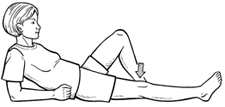
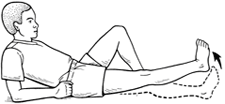
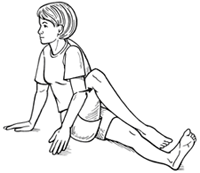

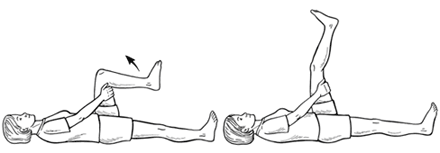
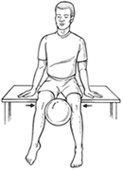
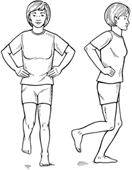
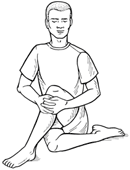
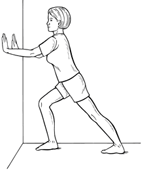
View all our fact sheets
Sydney Sports Medicine Centre
Level 2, NSWIS Building
6 Figtree Drive
Sydney Olympic Park
NSW 2127
Written Correspondence
PO Box 3275
Rhodes NSW 2138
(02) 9764 3131 (02) 9764 3443
Appointments are available for some disciplines:
Mon - Fri
Saturdays
6:30am - 7:30pm
6:30am - 1:30pm
Reception is open:
Mon - Thurs
Fridays
Saturdays
8:00am - 7:00pm
8:00am - 6:00pm
8:00am - 1:00pm
